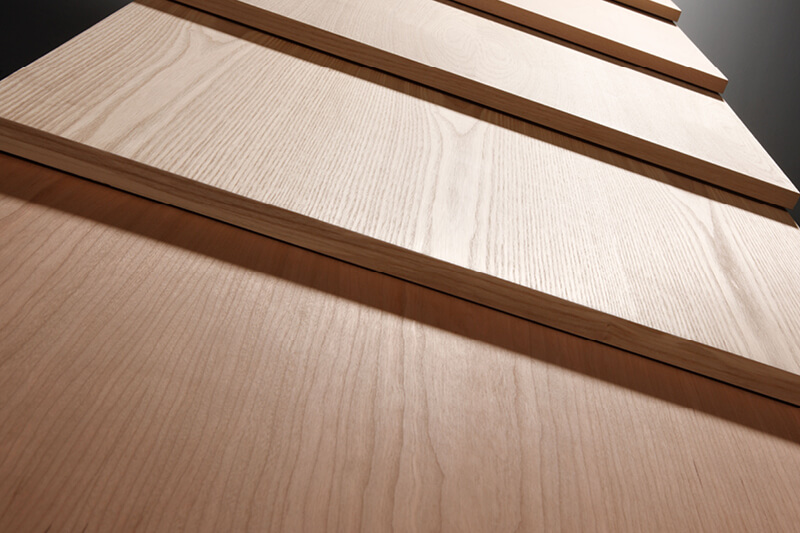Veneer sanding

The application of veneered workpieces is just as versatile as their multitude of design possibilities. In everyday production we encounter crosswise or longitudinally veneered workpieces, with rounded, rectangular, irregular shapes, with and without cutouts. In addition, an increasing spectrum of parts are to be sanded, from soft to hard veneers – in part with inlay work on one side – or with overhanging solid lippings. Due to economic reasons veneers become thinner and thinner. For this reason particularly innovative sanding technology solutions must imply a high degree of flexibility for industrially manufactured veneered parts.Heesemann veneer sanding machines are equipped for this task with:
-
- a wide, elastic pressure beam for the cross and longitudinal belts which ensures a large contact surface with the workpiece.
- a sensitive workpiece sensing.
- the unique infinite electromagnetic CSD® pressure regulation, which also precludes the danger of sanding through in edge areas and cutouts.
- a tolerance compensation of 2 mm and more in the pressure beam permitting the clean sanding of warped parts or those with deviating thickness.
- computer controlled automatic pressure calculation for the individual pressure shoes, which, for example, calculates an asymmetric pressure presetting in the event of a solid lipping on one edge.
- cross sanding units, which cut off wood fibres across the grain. At the same time the cross sanding units give cross veneered parts a final sanding in veneer direction.
- a workpiece suction device, which ensures the secure transport of small parts such as drawer fronts.
- safety circuit and electronic brakes on the units avoid damage to the workpieces in the event of a belt rupture.
- a programme memory for storing various sanding settings for different veneer types, to reduce setting time to a minimum.
- an energy saving intensive belt blasting device for a longer belt operating life.


